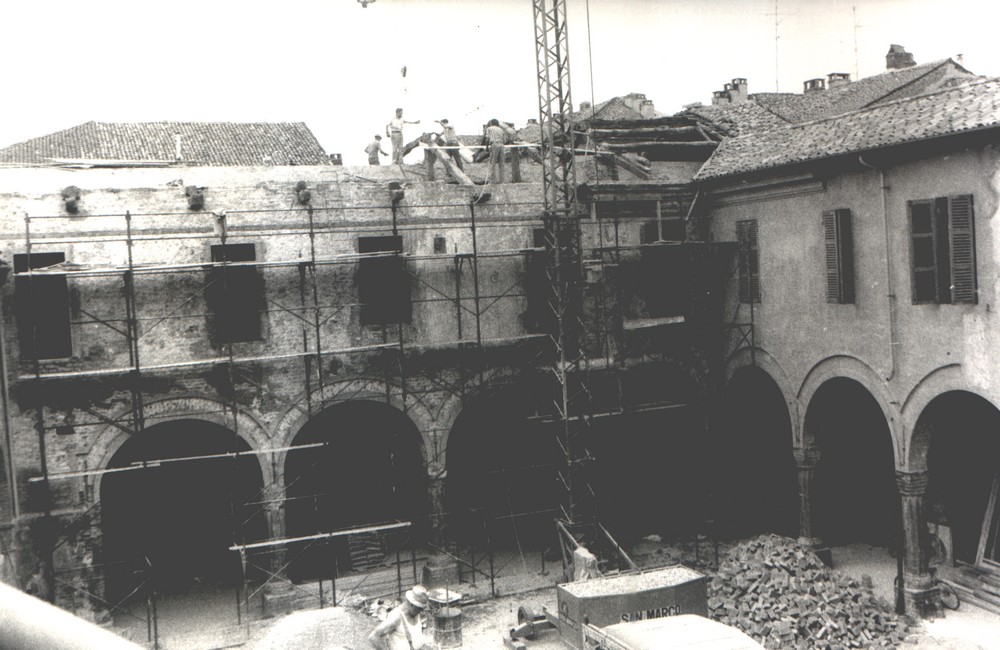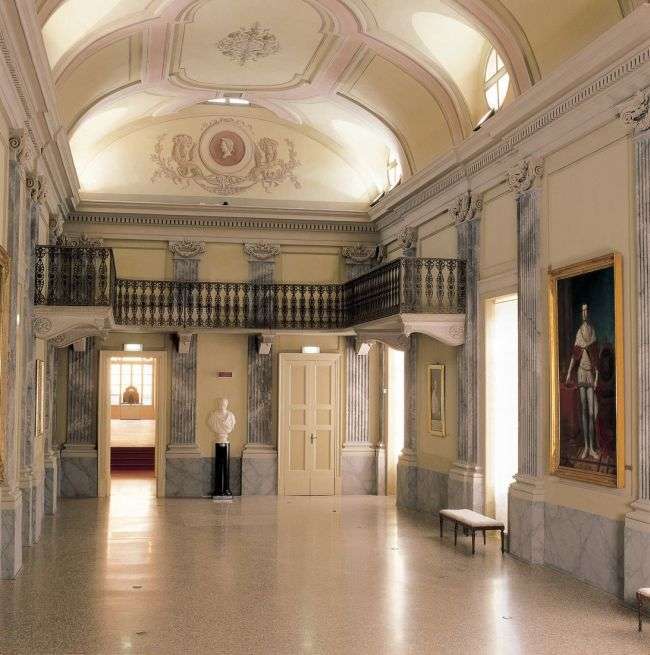Civic Museum and Bistolfi Gipsoteca

The Civic Museum is housed in the ancient Augustinian convent of Santa Croce which preserves, in the two cloisters, fresco decorations created by Guglielmo Caccia known as Moncalvo with the help of Giorgio Alberini. Twenty-four rooms host more than five hundred works that make up a rich heritage linked to the city's history and Piedmontese and Lombard art.
The Museum is a cultural reality of ancient institution, even if open to the public in a discontinuous way and in different places.

On 25 January 1910, following the testamentary bequest of Countess Clara Leardi, the Municipal Council approved the establishment of a Civic Museum in Casale Monferrato and submitted it to the City Council on 23 February for the first ratification and definitive confirmation, which took place on March 24, 1910.
The Gipsoteca Bistolfi, on the other hand, was born with a Council resolution of July 5, 1966. Finally, the City Council resolution of March 30, 1979 identified the former convent of Santa Croce as the new headquarters and in 1981 the constitution of the Museum Office was ratified.

Under the name of Civic Museum and Gipsoteca Bistolfi it was reorganized and opened to the public continuously in 1995 in its current location with the intervention of prof. Umberto Eco.
In the entrance hall we are welcomed by the nineteenth-century marble commemorative busts of illustrious exponents of the Vidua Leardi house, one of which depicts Clara Leardi, the donor of the first group of works received in the civic collections in 1854.

The museum occupies the rooms of an architectural complex that has had an uninterrupted life for six centuries.
The first nucleus of the convent originated in the thirteenth century with the Umiliati fathers who were replaced by the Augustinian Conventual friars who, in the fourteenth century, with the support of the Marquises of Monferrato and the noble Gaspardone family, enlarged the convent and rebuilt the church. Of the latter, today, remains the perimeter wall structure of the building and the eighteenth-century facade, the work of Magnocavalli, overlooking Via Roma.

In the seventies of the fifteenth century the Augustinians Observants of Lombardy settled and, with the donation by William VIII Palaeologus of a section of the walls and the respective moat, further expanded the convent. The embellishment works, especially in the cloisters, followed one another between the 16th and the beginning of the 17th century until the late 18th century with the renovation of the dormitories and the chapter house on the first floor. In 1801, by decree of the French government, the convent and the church were suppressed: the convent was destined to Maison de la Mairie, that is Town Hall, and the church was dismantled of all furnishings.
Video: Civic Museum and Bistolfi Gipsoteca
Map: Civic Museum and Bistolfi Gipsoteca
Address: Via Camillo Benso Cavour, 5, 15033
Casale Monferrato (AL) Piemonte
Latitude: 45.134934542790624
Longitude: 8.451544046401978
Site: https://www.leporatiwine.com/2...
vCard created by: CHO.earth
Currently owned by: CHO.earth
Type: Building
Function: Museum
Creation date:
Last update: 24/06/2022